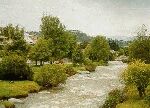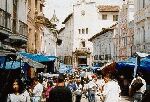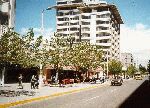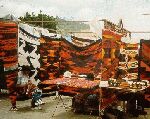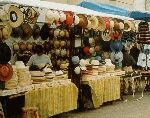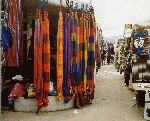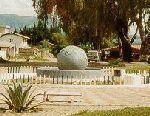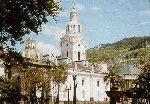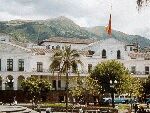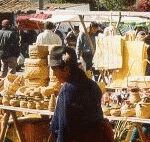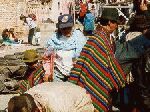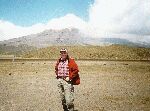| Ecuador |
Si Ud. quiere leer esta pagina en Castellano haga "click" sobre YUPI - Educacion |
|
This is an account of my journey through Ecuador in January 1999. I was interested in travelling to Ecuador overland for a few reasons. I had never done a border crossing overland before in this part of the world; it is cheaper than flying; and it was a way of seeing more of the country. (Note; all the images can be viewed in full by double-left-clicking on the thumbnail image. In order to avoid a very long and boring bus journey travelling north along the Peruvian coastal desert I caught an early morning flight from Lima to Piura and was in the centre of Piura by 9 a.m. From here I took a shared taxi (taxi colectivo) to Sullana (40 minutes) and then another shared taxi to the border at Puente Macará (one and half hours). The taxi colectivo is in common use in South America; they are nearly as cheap as the bus but a lot quicker. Of course, you can't choose who or what you travel with - the one I took to the border had the rear filled to the roof with vegetables. The smell wasn't unpleasant but the vehicle was well down on its rear springs. As we headed towards Ecuador the countryside changed from a flat desert with scrub bushes to green hills covered with forest. The taxi stops 100m short of the border, which is the bridge over the Rio Macará, and from here I had to proceed on foot stopping at the migration office to get an exit stamp in my passport. Then I walked over the bridge, showed my passport to the police post on the Ecuador side then took a pick-up truck in to the town of Macará. I got here just before 1 p.m. so I had time to change some money, have some lunch and then waited until the migration office re-opened at 2 p.m. to get my passport entry stamp into Ecuador. I then had plenty of time to get the next bus to Loja that left at 3 p.m. This bus journey took nearly five hours over a reasonably good road. The route climbs higher and higher into the hills and by this time the weather had changed to dull and showery. For part of the journey we were in the clouds and couldn't see much at all. After staying overnight in Loja, the next morning I took a bus (one and half hours) to Vilcabamba. (This village and the surrounding valley are well-known because the inhabitants of the area are reputed to live to a very old age.) The valley itself is very pleasant (rather like the English Lake District with tropical vegetation) and there is a lot of opportunity to go hiking and pony-trekking. Unfortunately, there were frequent rain showers and since there isn't much else to do in Vilcabamba I decided to stay only one night. Next morning I returned to Loja by taxi colectivo and then took the bus to Cuenca (five and a half hours). The journey would have been much quicker if the asphalt road surface had been maintained; it was a continual succession of pot-holes and the bus just crawled along dodging the worst of them. The countryside was pleasant with high hills and deep valleys and many small farms. Now carry on travelling to - |

